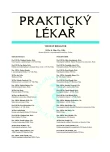Nutritional care in premature babies after hospital discharge
Authors:
I. Burianová; J. Janota
Authors‘ workplace:
Fakultní Thomayerova nemocnice s poliklinikou, Praha
; Primář: MUDr. Jan Janota, PhD.
; Novorozenecké oddělení
Published in:
Prakt. Lék. 2009; 89(1): 20-21
Category:
Of different specialties
Overview
Due to specialised perinatal care the survival of premature babies has improved markedly within last 20 years. These infants are discharged from hospitals at weights below the average birth weight of healthy full-term newborns. Regular measurements of length, head circumference and weight must be closely monitored to identify infants with growth retardation. These infants must be supported early by nutritional intervention. Premature infants with an appropriate weight should be breast-fed, or, if breastfeeding is not possible, such infants should be fed by special infant discharge formula with long-chain polyunsaturated fatty acids, at least until a postconceptional age of approximately 52 weeks.
Key words:
premature infant, nutrition, nutritional assessment, growth and development.
Sources
1. Academy of Breastfeeding Medicine. Transitioning the breastfeeding/breastmilk-fed premature infant from the neonatal intensive care unit to home. Clinical protocol #12, 2004 [on-line]. Dostupné na www: http://www.bfmed.org/ace-images/NicuGrad Protocol.pdf.
2. American Academy of Pediatrics, Section on Breastfeeding. Breastfeeding and the use of human milk. Pediatrics, 2005, 115, p. 496-506.
3. ESPGHAN Committee on Nutrition. Feeding preterm infants after hospital discharge. J. Pediatr. Gastroenterol. Nutr. 2006, 42, p. 596-603.
4. Hall, R.A. Nutritional follow-up of the breastfeeding premature infant after hospital discharge. Pediatr. Clin. North. Amer. 2001, 48 p. 453-460.
5. Schanler, R.J. Nutrition support of the low birth weight infant. In: Walker, WA, Watkins, JB, Duggan, CP (eds): Nutrition in Pediatrics, 3rd edition, BC Decker Inc, Canada, 2003; p. 392-412.
6. Schanler, R.J. Post-discharge nutrition for preterm infant. Acta Pediatr. 2005, 94 (Suppl 449), p. 68-73.
Labels
General practitioner for children and adolescents General practitioner for adultsArticle was published in
General Practitioner

2009 Issue 1
- Memantine Eases Daily Life for Patients and Caregivers
- Metamizole vs. Tramadol in Postoperative Analgesia
- Metamizole at a Glance and in Practice – Effective Non-Opioid Analgesic for All Ages
- Memantine in Dementia Therapy – Current Findings and Possible Future Applications
- What Effect Can Be Expected from Limosilactobacillus reuteri in Mucositis and Peri-Implantitis?
Most read in this issue
- Chronic wound treatment in old age under supervision of a geriatrician
- Nutritional care in premature babies after hospital discharge
- Current possibilities for the treatment of patients with epilepsy.
- Estimation of renal function changes on the basis of serum creatinine levels – potential and limitations
